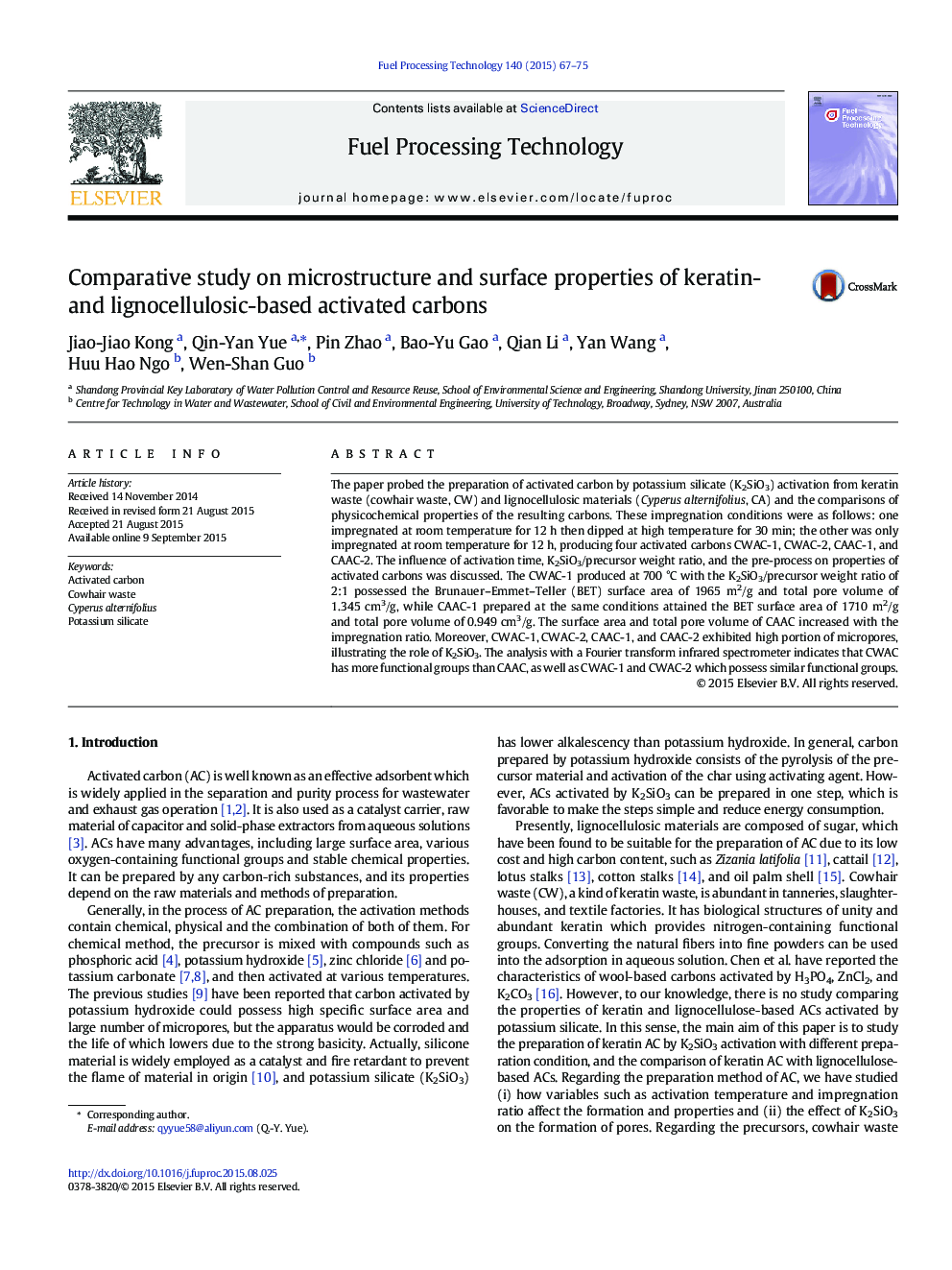| Article ID | Journal | Published Year | Pages | File Type |
|---|---|---|---|---|
| 209300 | Fuel Processing Technology | 2015 | 9 Pages |
•Pores of CWAC were more uniform than those of CAAC.•CWAC had more functional groups than CAAC.
The paper probed the preparation of activated carbon by potassium silicate (K2SiO3) activation from keratin waste (cowhair waste, CW) and lignocellulosic materials (Cyperus alternifolius, CA) and the comparisons of physicochemical properties of the resulting carbons. These impregnation conditions were as follows: one impregnated at room temperature for 12 h then dipped at high temperature for 30 min; the other was only impregnated at room temperature for 12 h, producing four activated carbons CWAC-1, CWAC-2, CAAC-1, and CAAC-2. The influence of activation time, K2SiO3/precursor weight ratio, and the pre-process on properties of activated carbons was discussed. The CWAC-1 produced at 700 °C with the K2SiO3/precursor weight ratio of 2:1 possessed the Brunauer–Emmet–Teller (BET) surface area of 1965 m2/g and total pore volume of 1.345 cm3/g, while CAAC-1 prepared at the same conditions attained the BET surface area of 1710 m2/g and total pore volume of 0.949 cm3/g. The surface area and total pore volume of CAAC increased with the impregnation ratio. Moreover, CWAC-1, CWAC-2, CAAC-1, and CAAC-2 exhibited high portion of micropores, illustrating the role of K2SiO3. The analysis with a Fourier transform infrared spectrometer indicates that CWAC has more functional groups than CAAC, as well as CWAC-1 and CWAC-2 which possess similar functional groups.
